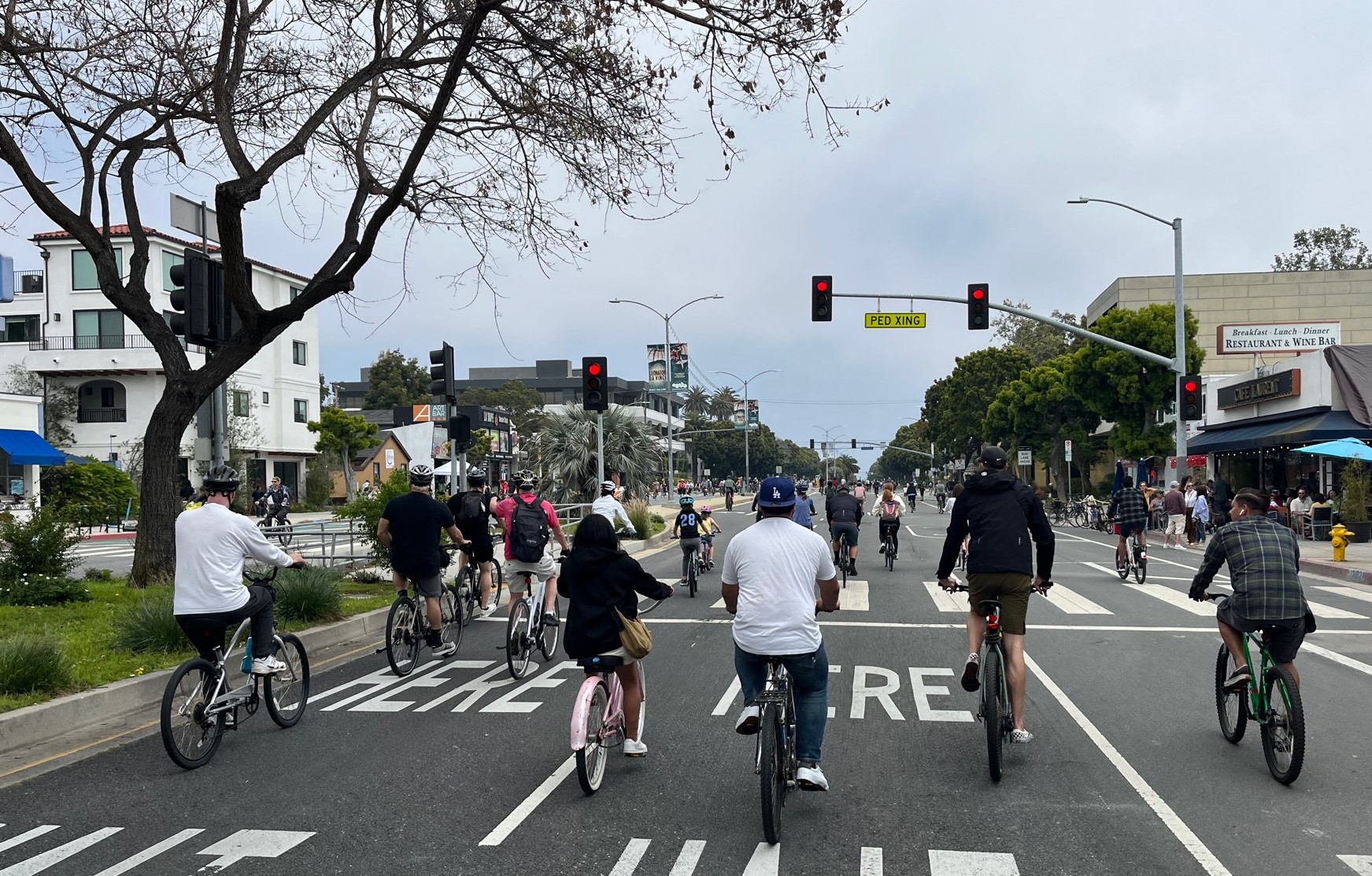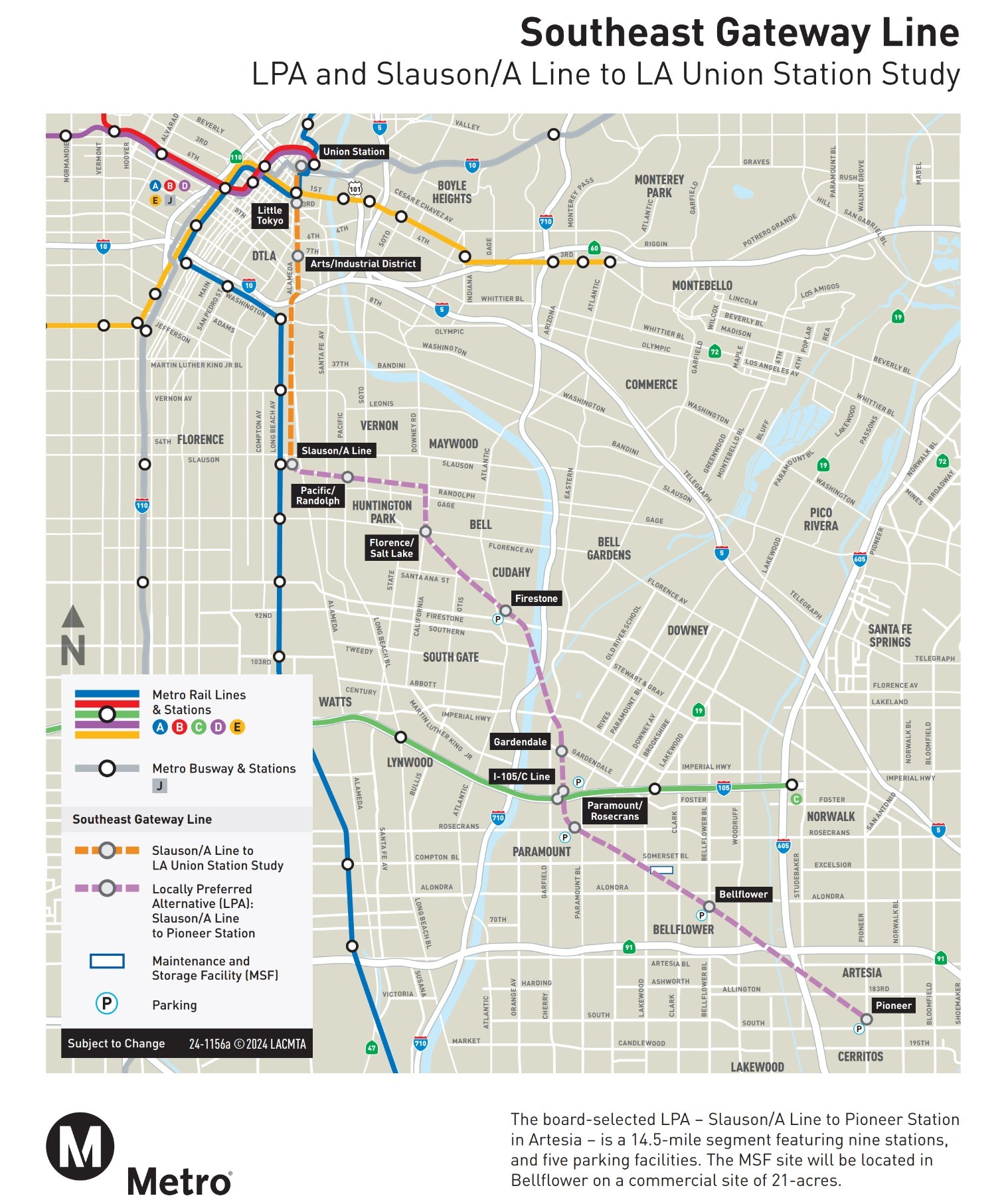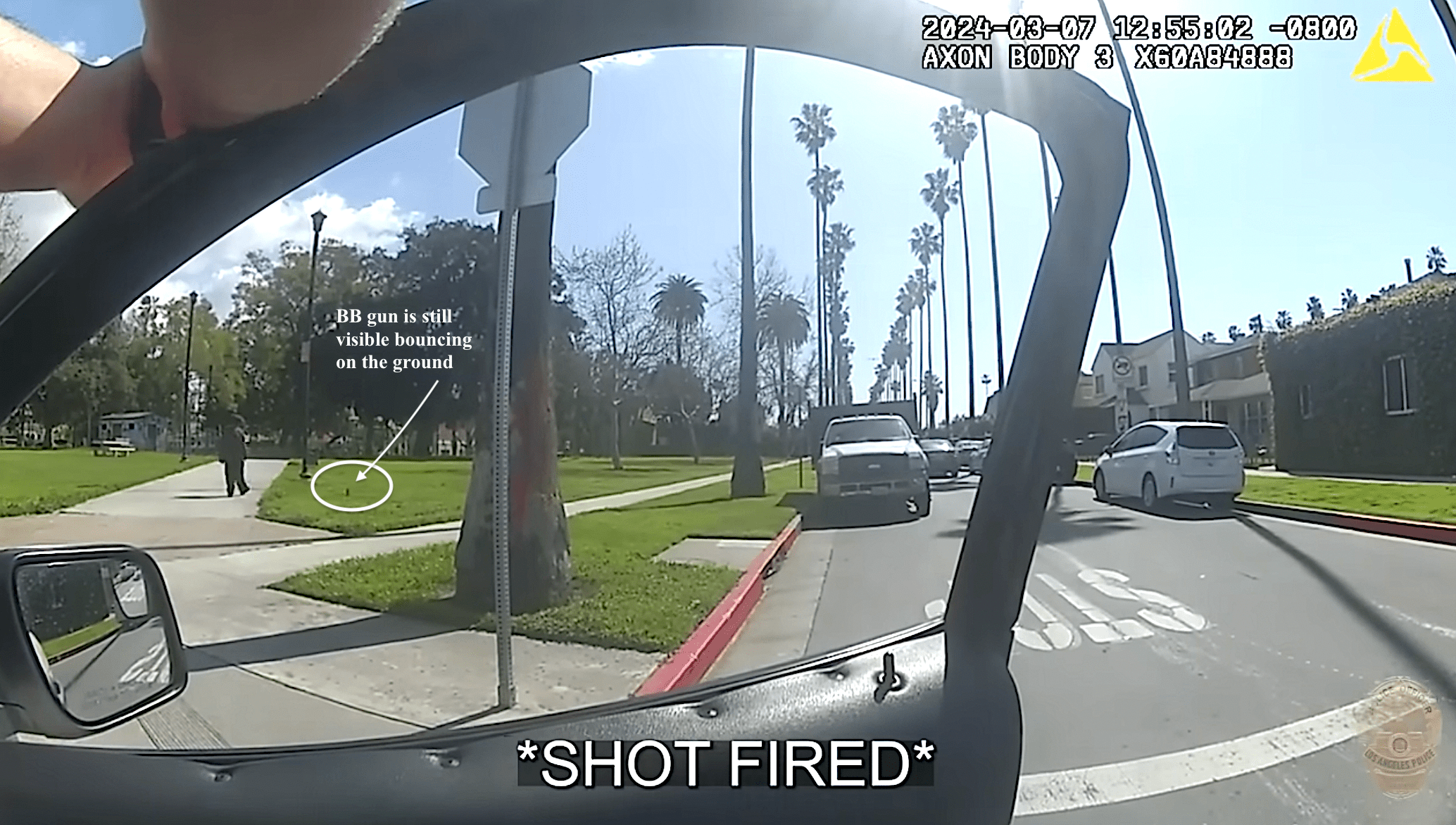“The Sunnyvale Decision” and Phase II of Expo: Game Changer or Footnote?
8:14 AM PST on December 22, 2010
Yesterday, Judge Thomas McKnew gave a victory to Expo Phase II by issuing a tentative ruling that, if he doesn't change his mind in the next couple of weeks, would dismiss the lawsuit challenging the environmental review for the second stage of the Expo Line by Neighbors for Smart Rail. Going into the hearing, most advocates were predicting dismissal based on the quality of the mitigations that the Expo Construction Authority has proposed at places where the light rail line will cross north-south streets.
After NFSR lawyer John Bowman introduced case law that was decided five days ago, Sunnyvale West Neighborhood Association v. City of Sunnyvale City Council, things changed. In Sunnyvale, a state superior court ruled that the city's environmental review of a road extension violated state law because it based it's review on traffic projections for 2020 instead of current conditions. The mitigation plan for Expo are based on traffic projections for 2030.
McKnew gave both sides a chance to present briefs on Sunnyvale explaining their side's view on the ruling. Attorneys for the Construction Authority refused so the judge will make his ruling after studying the case himself, without the "aid" of either side outside of what was presented today. Yesterday's case was the entire public trial. The judge will issue his final ruling without more testimony, probably in January or early February.
Proponents of Phase II are undeterred in celebrating yesterday's decision. The Tentative Order is now hosted on Friends 4 Expo's website. Pro-Expo bloggers are openly mocking NFSR and their attorney. The mood at the Transit Coalition message boards is positively ebullient. But a Tentative Order is just that, tentative. If McKnew sees something in Sunnyvale that changes his mind, that would change everything. Regardless of the judge's ruling, an appeal is almost assured as Sunnyvale provides hope for NFSR and allies.
But as to whether or not Sunnyvale changes the legal landscape, you're probably not going to be surprised in who thinks it does, and who thinks it doesn't.
Damien Goodmon explains Bowman's argument:
The NFSR attorney argued that Sunnyvale supports their argument that the Expo EIR is invalid and violates CEQA because the Expo Authority used an improper baseline (2030) to evaluate the project's impacts, and that CEQA requires them to have used some period between 2007 (notice of preparation) and Feb 2010 (the date of the board action certifying the DEIR). There was also some discussion that this date may even be liberally allowed to 2015 (the projected date of operation), but focus and arguments were mostly on the need for the baseline to be sometime between 2007 - 2010.
He then sent along excerpts from the Sunnyvale decision that state, at least 13 different times, that an environmental review using projected traffic studies from the distant future as a baseline are a violation of CEQA. For example:
An approach using hypothetical allowable conditions as the baseline results in ‘illusory’ comparisons that ‘can only mislead the public as to the reality of the impacts and subvert full consideration of the actual environmental impacts,’ a result at direct odds with CEQA's intent. (Environmental Planning Information Council v. County of El Dorado, supra, 131 Cal.App.3d at p. 358․)
I should note that Goodmon wasn't predicting that McKnew will change its ruling, just that such an outcome is not unthinkable. At the same time, an appeal from NFSR would probably be based on Sunnyvale if McKnew holds his ground. LA Weekly even quotes one of NFSR'S leaders, Colleen Heller, promising an appeal.
"This is just the prolongation of a fight that we've committed to until the end result," said Colleen Heller, vice president of NFSR. "It ain't over till the fat lady sings."
Meanwhile, proponents are dismissing the impact this new case law could have as a last gasp effort after the Tentative Order rejected every other possible argument. McKnew reportedly even joked with Bowman that the lawyer was trying to throw every argument he could out there and see what sticks. There's a lot of people who wrote me about the decision that were Expo supporters, but since Gokhan Esirgen called most of the judge's Tentative Order correctly in Monday's article, we'll give him the last word on why he, and most other Expo supporters, aren't worried about Sunnyvale. Once the judge issues his Final Ruling, we'll report it here:
Back to the Sunnyvale case, what the City of Sunnyvale had done was that they assumed all-out development in 2020, which brought considerably more noise, traffic, and pollution, and then measured the environmental impacts of extending the street against this baseline. Of course, this was plain cheating for at least two reasons. The reason one was that environmental impacts of such all-out development weren't really within the scope of the EIR for the street extension. Therefore, there was no good way of predicting such impacts by an all-out development. Second reason, which was even more important, was that there was not even the slightest guarantee that there would be all-out development in Sunnyvale by 2020. In fact, it was far more than likely that there wouldn't be. By using the all-out development as their baseline, City of Sunnyvale was lowering their environmental standards significantly and unjustifiably. The superior court had easily caught this cheating and rejected the EIR and the appeal court upheld the decision five days ago.
In the case of the Expo Line, the situation was completely different. The EIR never assumed all-out or anywhere near that extent of development and the place in the EIR where 2030 was used as a baseline was primarily in the grade-crossing analysis. Moreover, using 2030 as the baseline actually raised the environmental standards, not lowered it like in the Sunnyvale case. What was done in the Expo EIR was to assume about 15% more cars on the road in 2030, which resulted in the environmental criteria for grade separation and traffic mitigation being more strict because more cars on the road meant it was more difficult to run at-grade rail crossings.
Stay in touch
Sign up for our free newsletter
More from Streetsblog Los Angeles
This Week In Livable Streets
Active Streets Mission-to-Mission, LAPD reports on its use of force in 2023, Pasadena Transit plans, Metro subway construction, and more
Eyes on the Street: Santa Monica Connection from E Line Bike Path to Downtown Is Almost Complete
“Always be closing gaps in your bikeway network.”
CicLAvia Opens Venice Boulevard – Open Thread
CicLAvia opened six miles of Venice Boulevard - from Culver City Station to Venice Beach
LAPD shoots, strikes unarmed unhoused man as he walks away from them at Chesterfield Square Park
The newly released briefing video depicts Robles as non-compliant and claims officer Gomez-Magallanes shot him for pointing a weapon at officers, but body cam footage shows Gomez-Magallanes continued to fire at - and ultimately hit - Robles after he turned away and tossed the BB gun aside.





